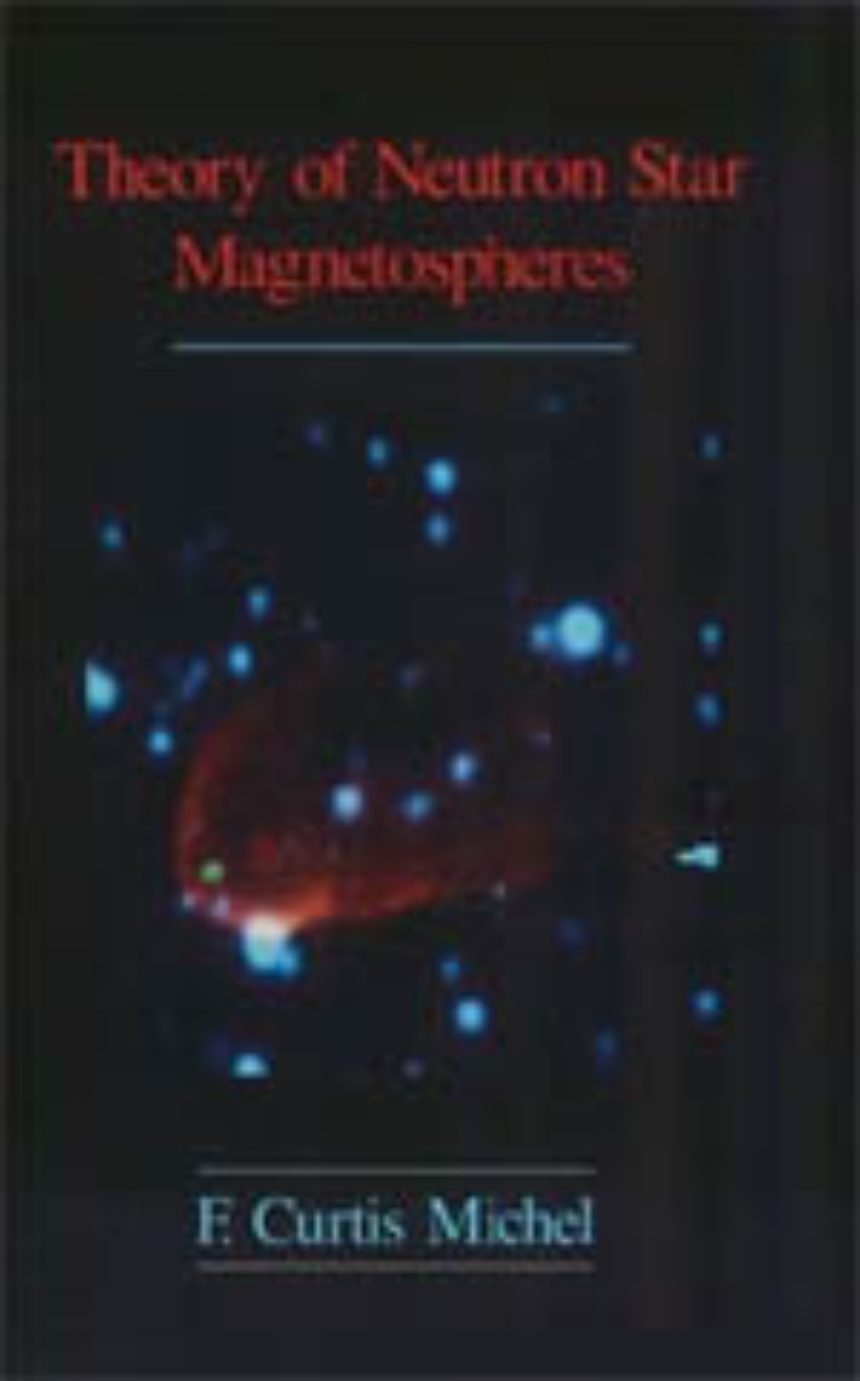Theory of Neutron Star Magnetospheres
An incomparable reference for astrophysicists studying pulsars and other kinds of neutron stars, Theory of Neutron Star Magnetospheres sums up two decades of astrophysical research. It provides in one volume the most important findings to date on this topic, essential to astrophysicists faced with a huge and widely scattered literature.
F. Curtis Michel, who was among the first theorists to propose a neutron star model for radio pulsars, analyzes competing models of pulsars, radio emission models, winds and jets from pulsars, pulsating X-ray sources, gamma-ray burst sources, and other neutron-star driven phenomena. Although the book places primary emphasis on theoretical essentials, it also provides a considerable introduction to the observational data and its organization. Michel emphasizes the problems and uncertainties that have arisen in the research as well as the considerable progress that has been made to date.
F. Curtis Michel, who was among the first theorists to propose a neutron star model for radio pulsars, analyzes competing models of pulsars, radio emission models, winds and jets from pulsars, pulsating X-ray sources, gamma-ray burst sources, and other neutron-star driven phenomena. Although the book places primary emphasis on theoretical essentials, it also provides a considerable introduction to the observational data and its organization. Michel emphasizes the problems and uncertainties that have arisen in the research as well as the considerable progress that has been made to date.
Table of Contents
List of Figures
List of Tables
Preface
1. Pulsars as Neutron Stars
1.1. Historical Notes
1.2. Nature of Pulsars
1.3. Dimensional Analysis
1.4. Comparison with Planetary Magnetospheres
1.5. Observational Situation
1.6. Pulsar Properties and Statistics (exceptional properties)
1.7. Neutron Star Properties
2. General Analysis of What a Pulsar Is
2.1. Introduction to the Models
2.2. Observational Constraints
2.3. Physical Constraints
2.4. Pulsar Statistics
2.5. Emission Mechanisms
2.6. Propagation
2.7. Other Pulsar Emissions
3. Phenomenological Models
3.1. Introduction
3.2. Hollow Cone Model
3.3. Other Suggestions
4. Idealized Model: The Aligned Rotator
4.1. Introduction
4.2. Aligned Rotator Electrodynamics
4.3. The Former "Standard" Model
4.4. Problems with Standard Model
4.5. Extensions of the Standard Model
5. A. Realistic Model: The Oblique Rotator
5.1. Introduction
5.2. Large-Amplitude Electromagnetic Wave Generation
5.3. Plasma Distribution about an Oblique Rotator
6. The Disk Model
6.1. Introduction
6.2. The Electrodynamics
6.3. The Disk
6.4. Consequences of Disks
7. Alternative Models
7.1. Introduction
7.2. Jupiter as a Pulsar
7.3. Oscillating Objects
7.4. Sheet Discontinuities
7.5. Unconventional Models
7.6. White Dwarf Hypothesis
7.7. Black Holes
8. Radio Emission Models
8.1. Introduction
8.2. Radiation Models
8.3. Bunching Mechanisms
8.4. Maser Mechanisms
9. Winds and Jets from Pulsars
9.1. Introduction
9.2. Steady State Magnetohydrodynamic Solutions
9.3. Steady State Charge-Separated Solutions
9.4. Waves in the Wind
9.5. Plasma Pickup by Pulsar Electromagnetic Waves
9.6. Cosmic Ray Acceleration in Shocks
10. Pulsating X-ray Sources
10.1. Introduction
10.2. Symmetric Accretion into a Gravitational Well (e.g., neutron stars)
10.3. Accretion onto a Magnetized Neutron Star
10.4. Evolution of the Disk
11. Gamma-ray Burst Sources
11.1. Introduction
11.2. Gamma-ray Bursts from Extinct Radio Pulsars
12. Other Phenomena Driven by Neutron Stars
12.1. Introduction
12.2. Objects Possibly Containing Neutron Stars
References
Index
List of Tables
Preface
1. Pulsars as Neutron Stars
1.1. Historical Notes
1.2. Nature of Pulsars
1.3. Dimensional Analysis
1.4. Comparison with Planetary Magnetospheres
1.5. Observational Situation
1.6. Pulsar Properties and Statistics (exceptional properties)
1.7. Neutron Star Properties
2. General Analysis of What a Pulsar Is
2.1. Introduction to the Models
2.2. Observational Constraints
2.3. Physical Constraints
2.4. Pulsar Statistics
2.5. Emission Mechanisms
2.6. Propagation
2.7. Other Pulsar Emissions
3. Phenomenological Models
3.1. Introduction
3.2. Hollow Cone Model
3.3. Other Suggestions
4. Idealized Model: The Aligned Rotator
4.1. Introduction
4.2. Aligned Rotator Electrodynamics
4.3. The Former "Standard" Model
4.4. Problems with Standard Model
4.5. Extensions of the Standard Model
5. A. Realistic Model: The Oblique Rotator
5.1. Introduction
5.2. Large-Amplitude Electromagnetic Wave Generation
5.3. Plasma Distribution about an Oblique Rotator
6. The Disk Model
6.1. Introduction
6.2. The Electrodynamics
6.3. The Disk
6.4. Consequences of Disks
7. Alternative Models
7.1. Introduction
7.2. Jupiter as a Pulsar
7.3. Oscillating Objects
7.4. Sheet Discontinuities
7.5. Unconventional Models
7.6. White Dwarf Hypothesis
7.7. Black Holes
8. Radio Emission Models
8.1. Introduction
8.2. Radiation Models
8.3. Bunching Mechanisms
8.4. Maser Mechanisms
9. Winds and Jets from Pulsars
9.1. Introduction
9.2. Steady State Magnetohydrodynamic Solutions
9.3. Steady State Charge-Separated Solutions
9.4. Waves in the Wind
9.5. Plasma Pickup by Pulsar Electromagnetic Waves
9.6. Cosmic Ray Acceleration in Shocks
10. Pulsating X-ray Sources
10.1. Introduction
10.2. Symmetric Accretion into a Gravitational Well (e.g., neutron stars)
10.3. Accretion onto a Magnetized Neutron Star
10.4. Evolution of the Disk
11. Gamma-ray Burst Sources
11.1. Introduction
11.2. Gamma-ray Bursts from Extinct Radio Pulsars
12. Other Phenomena Driven by Neutron Stars
12.1. Introduction
12.2. Objects Possibly Containing Neutron Stars
References
Index
